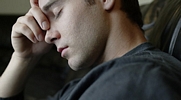|
|
 Acne (1,500) Acne (1,500)
 Addictions (1,500) Addictions (1,500)
 Advice (1,500) Advice (1,500)
 Allergies (1,092) Allergies (1,092)
 Alternative Medicine (1,500) Alternative Medicine (1,500)
 Anti Aging (1,500) Anti Aging (1,500)
 Breakup (1,500) Breakup (1,500)
 Cancer (1,499) Cancer (1,499)
 Dental Care (1,500) Dental Care (1,500)
 Disabilities (1,500) Disabilities (1,500)
 Divorce (1,500) Divorce (1,500)
 Elderly Care (1,498) Elderly Care (1,498)
 Goal Setting (1,500) Goal Setting (1,500)
 Hair Loss (1,500) Hair Loss (1,500)
 Health and Safety (1,497) Health and Safety (1,497)
 Hearing (1,500) Hearing (1,500)
 Law of Attraction (1,499) Law of Attraction (1,499)
 Marriage (1,500) Marriage (1,500)
 Medicine (1,497) Medicine (1,497)
 Meditation (1,499) Meditation (1,499)
 Men's Health (1,500) Men's Health (1,500)
 Mental Health (1,500) Mental Health (1,500)
 Motivational (1,500) Motivational (1,500)
 Nutrition (1,495) Nutrition (1,495)
 Personal Injury (1,499) Personal Injury (1,499)
 Plastic Surgeries (1,500) Plastic Surgeries (1,500)
 Pregnancy (1,496) Pregnancy (1,496)
 Psychology (1,500) Psychology (1,500)
 Public Speaking (1,500) Public Speaking (1,500)
 Quit Smoking (1,500) Quit Smoking (1,500)
 Religion (1,499) Religion (1,499)
 Self Help (1,500) Self Help (1,500)
 Skin Care (1,500) Skin Care (1,500)
 Sleep (1,500) Sleep (1,500)
 Stress Management (1,500) Stress Management (1,500)
 Teenagers (1,492) Teenagers (1,492)
 Time Management (1,500) Time Management (1,500)
 Weddings (1,500) Weddings (1,500)
 Wellness (1,500) Wellness (1,500)
 Women's Health (1,500) Women's Health (1,500)
 Women's Issues (1,500) Women's Issues (1,500)
|
Acne is a disease of pilosebaceous units in the skin. It is thought to be caused by the interplay of four factors. Excessive sebum production secondary to sebaceous gland hyperplasia is the first abnormality to occur. Subsequent hyperkeratinization of the hair follicle prevents normal shedding of the follicular keratinocytes, which then obstruct the follicle and form an inapparent microcomedo. Lipids and cellular debris soon accumulate within the blocked follicle. This microenvironment encourages colonization of Propionibacterium acnes, which provokes an immune response through the production of numerous inflammatory mediators. Inflammation is further enhanced by follicular rupture and subsequent leakage of lipids, bacteria, and fatty acids into the dermis.
Diagnosis
The diagnosis of acne is based on the history and physical examination. Lesions most commonly develop in areas with the greatest concentration of sebaceous glands, which include the face, neck, chest, upper arms, and back. Acne vulgaris may be defined as any disorder of the skin whose initial pathology is the microscopic microcomedo. The microcomedo may evolve into visible open comedones ("blackheads") or closed comedones ("whiteheads"). Subsequently, inflammatory papules, pustules, and nodules may develop. Nodulocystic acne consists of pustular lesions larger than 0.5 cm. The presence of excoriations,
postinflammatory hyperpigmentation, and scars should be noted. Acne may be triggered or worsened by external factors such as mechanical obstruction, occupational exposures, or medications. Cosmetics and emollients may occlude follicles and cause an acne form eruption. Topical corticosteroids may produce
perioral dermatitis, a localized erythematous papular or pustular eruption. Endocrine causes of acne include Cushing's disease or syndrome, polycystic ovary syndrome, and congenital adrenal hyperplasia.
Clinical clues to possible hyperandrogenism in women include dysmenorrhea, virilization and severe acne.
Classification
In 1990, the American Academy of Dermatology developed a classification scheme for primary acne vulgaris. This grading scale delineates three levels of acne: mild, moderate, and severe. Mild acne is characterized by the presence of few to several papules and pustules, but no nodules. Patients with moderate acne have several too many papules and pustules, along with a few to several nodules. With severe acne, patients have numerous or extensive papules and pustules, as well as many nodules.
Acne also is classified by type of lesion comedonal, papulopustular, and nodulocystic. Pustules and cysts are considered inflammatory acne.
Therapy
Selection of topical therapy should be based on the severity and type of acne. Topical retinoids, benzoyl peroxide, and azelaic acid are effective treatments for mild acne. Topical antibiotics and medications with bacteriostatic and anti-inflammatory properties are effective for treating mild to moderate inflammatory acne. Proper selection of topical formulations may decrease side effects and increase patient compliance. Fortunately, most acne medications are available in several forms.
Topical Antibiotics
These agents are another mainstay of acne treatment. Topical antibiotics commonly are used in conjunction with retinoids or benzoyl peroxide in patients with any degree of inflammatory acne. These drugs normally are applied once or twice daily.
|
|
|



